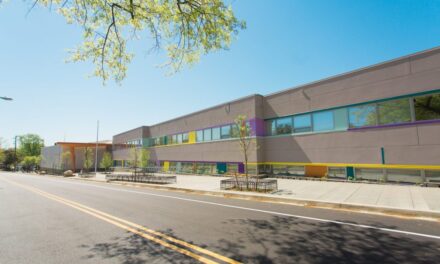The Rev. Dr. Martin Luther King Jr. speaking at the annual Men’s Day celebration at New Pilgrim Baptist Church in Birmingham, Alabama on March 6, 1960. (Alabama Department of Archives and History. Donated by Alabama Media Group. Photo by Tom Lankford, Birmingham News)
” data-medium-file=”https://www.birminghamtimes.com/wp-content/uploads/2024/01/MLK_visits-300×194.png” data-large-file=”https://www.birminghamtimes.com/wp-content/uploads/2024/01/MLK_visits.png” />
By Ryan Michaels
The Birmingham Times
Dr. Martin Luther King Jr. and Birmingham have been intertwined ever since the Civil Rights leader helped dismantle segregation in a city once known as “Bombingham” for the frequent explosions at homes and Black churches during the 1950’s and 60’s. Many point to King’s efforts in Birmingham in the spring of 1963, when he helped direct thousands of demonstrators to fill up Birmingham jails, as legacy-defining. His work during that pivotal year helped loosen the grip of segregation not just in the South but nationwide. However, King, whose birthday will be celebrated today on January 15, began his work in the Magic City before 1963 and he did return afterwards. Here’s a timeline of King’s most memorable visits to the city.
Jan. 23, 1955: King gives speech titled “A Realistic Approach to Race Relations” at a Birmingham NAACP rally at Tabernacle Baptist Church. In the speech, King rebukes pastors for ignoring the cause of civil rights.
March 7, 1956: King meets in Birmingham with journalist William Worthy and veteran organizer Bayard Rustin to develop strategy for the Montgomery Improvement Association. The MIA, which guided the Montgomery bus boycott, was led by King and civil rights titans Edgar “E.D.” Nixon and the Rev. Ralph Abernathy. The boycott, which began the Monday after Rosa Parks refused to give her seat to a white passenger on Dec. 1, lasted from Dec. 5, 1955 to Dec. 20, 1956, a little over a month after a U.S. Supreme Court decision deemed Alabama’s bus segregation unconstitutional.
March 6, 1960: King speaks at Men’s Day at New Pilgrim Baptist Church in Birmingham’s South Titusville neighborhood. The church, which was led by pastor Nelson H. Smith, a leader in the Fred Shuttlesworth-led Alabama Christian Movement for Human Rights (ACMHR), was a common meeting place for many Civil Rights leaders. King had just left his role as pastor at Dexter Avenue Baptist Church in Montgomery to dedicate more time to his Civil Rights work.
Feb. 12, 1962: King speaks on Abraham Lincoln’s birthday at an ACMHR event at Sixteenth Street Baptist Church in downtown Birmingham. In his speech, King urges members to keep the fight going for Civil Rights. “I wish I could tell you our road ahead is easy, that we are in the Promised Land, that we won’t have to suffer and sacrifice anymore, but not so. We have got to be prepared,” King says, according to archived police documents. “The time is coming when the police won’t protect us, the mayor and commissioner won’t think with clear minds, then we can expect the worse.”
King also recognizes the Rev. Fred Shuttlesworth, the president of the ACMHR, who was in jail at that time.
Sept. 24, 1962: King speaks at the beginning of the SCLC annual convention which is held in Birmingham. A few days into the convention, just after King had been reelected as president of the SCLC, a 22-year-old member of the American Nazi Party punches King twice. King urged those present to pray for the man and not hurt him.
April 2, 1963: King arrives at the A.G. Gaston Motel for the start of the Birmingham Campaign. Wyatt Walker, another civil rights leader and strategist, lays out plans for demonstrations to be held in the coming weeks.
April 3, 1963: King speaks alongside Walker and James Lawson, another Civil Rights Movement, to around 65 people before they are to sit in at five different lunch counters in the city. At Britt’s Department Store’s segregated lunch counter, 21 demonstrators are arrested.
April 4, 1963: King leads a small group in a march to Birmingham City Hall followed that evening by a mass meeting at St James Baptist Church.
April 11, 1963: King and other leaders receive a court-ordered injunction against “boycotting, trespassing, parading, picketing, sit-ins, kneel-ins, wade-ins, and inciting or encouraging such acts.”
April 12, 1963: In defiance of the injunction, King leads a march on Good Friday, alongside Abernathy and Shuttlesworth. King and 52 others arrested. While in solitary confinement at Birmingham City Jail, King pens his “Letter from Birmingham Jail.” He also writes that the “greatest stumbling block” for Black people may be the “white moderate who is more devoted to ‘order’ than justice.”
April 20, 1963: King bailed out of Birmingham City Jail, through money raised by singer and actor Harry Belafonte, who is a close friend and supporter of King.
April 30, 1963: After Birmingham city officials deny permits for a march on May 2, King allows James Bevel, another SCLC leader, to go before a mass meeting to inform people that demonstration would happen without the permits. Prior to his time with the SCLC, Bevel was part of the Nashville Student Movement, which organized student sit-ins in Nashville, Tennessee. King and other leaders decide to use similar tactics for the latest demonstration, courting high schoolers and younger children for the march. Around 600 children are arrested at the march. At a mass meeting that night, King said, “If they think today is the end of this, they will be badly mistaken.”
May 7, 1963: After days of marches, which had jailed over a thousand Black demonstrators, King speaks at a press conference at the A.G. Gaston Motel. He says the nonviolent protests have been wildly successful. “This is the first time in the history of our struggle that we have been able literally to fill the jails,” King says. As he speaks, young demonstrators prepare for yet another march, which begins around noon. Thousands of Black demonstrators flood downtown Birmingham’s streets and businesses and are met by high-powered fire hoses with such force that even Shuttlesworth is sent to the hospital as a result of the encounters.
May 8, 1963: Following the violence of the previous day and overnight negotiations between King and local leaders, demonstrations are called off for the day. Following a press conference from King and Shuttlesworth, and a press conference from President John F. Kennedy which praises the negotiation in Birmingham, the two Civil Rights leaders are arrested for being unable to pay fines for their protests, which violated an April 11 injunction barring them from demonstrating. Local business leader A.G. Gaston pays $5,000 to bail both King and Shuttlesworth out of jail.
May 10, 1963: King announces that Birmingham officials have agreed to end segregation during a press conference from the A.G. Gaston Motel. At a mass meeting later, he lays out the phases of desegregation and says jailed demonstrators were “either out of jail or on the way out of jail.”
May 11, 1963: A bomb explodes outside King’s room at the A.G. Gaston Motel, which had become the headquarters for King and his colleagues. Fortunately, King had already left for Atlanta.
Aug. 5, 1963: Entertainer Ray Charles, Writers James Baldwin and boxer Joe Louis are all present alongside King at the Miles College Salute to Freedom ’63, which was a fundraiser for the March on Washington for Jobs and Freedom, at which King would deliver his “I Have a Dream” speech later that month.
Sept. 18, 1963: King back in Birmingham for a somber moment as he delivers eulogy during a joint funeral for three of the four victims of Sixteenth Street Baptist Church bombing. In the bombing, four girls died — 11-year-old Denise McNair and 14-year-olds Addie Mae Collins, Carole Rosamond Robertson and Cynthia Dionne Wesley.
Oct. 30, 1967: King, Abernathy, Walker, and A. D. King in Birmingham to serve five-day sentences from contempt charges they received during the Birmingham campaign to end segregation in 1963.
Sources: Taylor Branch, “Parting the Waters”; Barnett Wright, “1963”; Stanford University’s Martin Luther King, Jr. Research and Education Institute; Birmingham Public Library; Birmingham News; New York Daily News.









